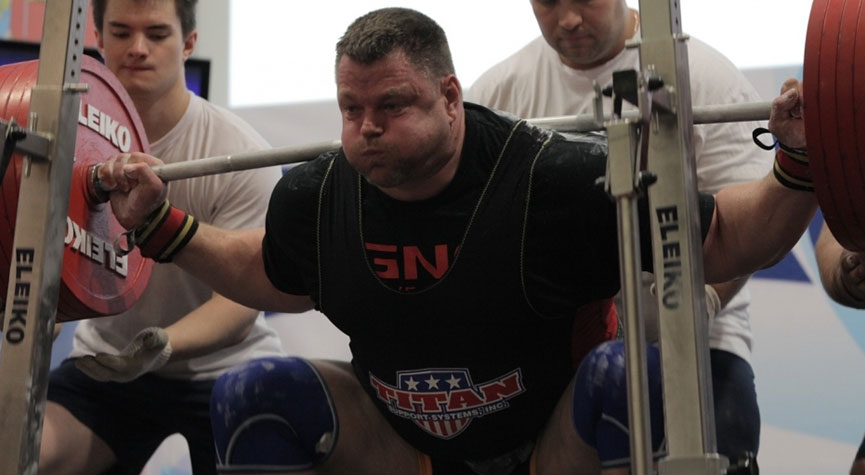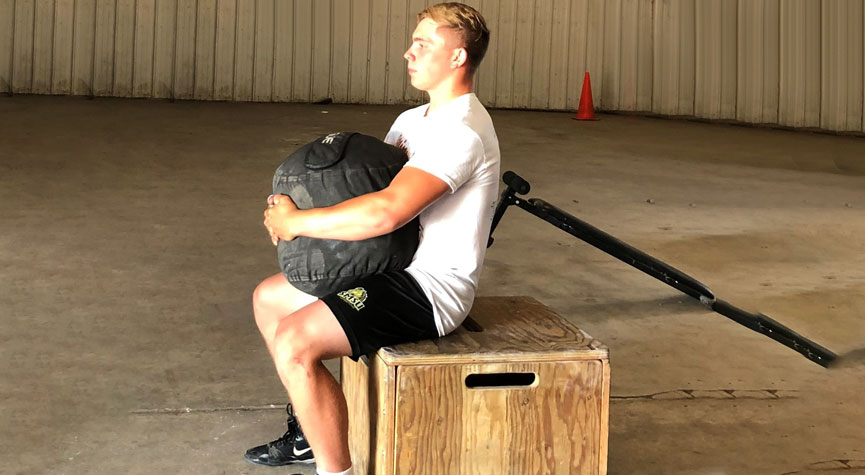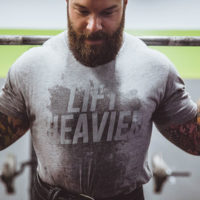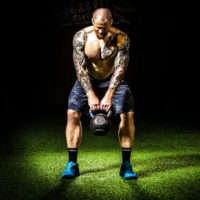Your hip extension utilizes some of the strongest muscles in your body and is important for daily movement.
Hall of Fame Powerlifter Brad Gillingham is here to explain it and how to develop it better.
Powerlifters generally think of developing strong hip extension as the source of the strength and power that is necessary to lock out heavy squats and deads. However, hip extension is a motor skill that is necessary for normal everyday activities like walking, running, jumping, swimming, and getting up from a seated position.
Biomechanically, hip extension depends primarily on the glutes and the hamstrings. The hip extensors provide the torque necessary to accelerate the body upward and forward from the hip flexion position.1
Having not been gifted with big legs, I was fortunate to be able to develop a strong backside. Strong glutes have been the key to my success in squatting and deadlifting.
Why It’s Important
Development of hip extension strength and power is also important for athletes that are looking to improve in strength, speed, and power. For example: volleyball and basketball players rely on powerful hip extension to jump, football players use powerful hip extension to block and tackle opponents, and track athletes rely on powerful hip extension to get out of the blocks and to accelerate down the track.

Training the Squat and Deadlift
For powerlifters training the squat and deadlift are obvious choices. Powerlifters rely on building hip extension strength to increase absolute strength in the deadlift and back squat.
However, the development of absolute strength for powerlifting is not the only benefit of squatting and deadlifting. Both movements are two of the main compound exercises included in strength training programs to build hip extension strength.
I include several squat and deadlift variations in both my volleyball and wrestling training programs. Research indicates that both are equally effective.
A study using male participants with at least 3 years of resistance training experience compared the training effects of the deadlift and squat on lower body strength and vertical jump power. The results of the study indicated that training either the squat or the deadlift could result in similar improvements in lower body strength and vertical jump performance.2
However, I still feel it is important to include a combination of both squatting and deadlift movements in all training programs.

Strongman Implement Hip Extension Development
Strongman training is not just for strongman competitors. It can be utilized through a variety of objects to provide strength-training benefits for any athlete that is looking to get stronger.
Sandbag squats and farmers’ walks are two strongman movements that I incorporate frequently in our workouts to build hip extension strength.
The sandbag box squat is going to work similar muscles as the back squat but put more of the load on the front of the body. This movement basically involves picking up the bag, stabilizing the upper back and torso, and using hip extension during the concentric phase to finish the lift.
The farmer’s walk is a total body exercise that targets several muscle groups including the shoulders, upper back, biceps, triceps, forearm muscles, glutes, quadriceps, hamstrings, and calf muscles.3 The initial movement is similar to a hexagonal or trap bar deadlift. Strong hip extension is needed to lift the implements off of the ground to the upright position. The entire body is worked when carrying the implements.

Don’t Neglect Mobility
In today’s age of electronic gadgets, tight hip flexors can result from sitting for extended periods of time. It is important to dedicate time in your program for hip mobility and for strengthening the hip flexors.
Muscle imbalance, tight muscles, and underdeveloped muscles can interfere with building hip extension. An altered hip extension movement pattern can be caused by tight hip flexors.
The hip flexors are a group of muscles including the psoas and rectus femoris. This disruption in movement pattern can cause hip extension dysfunction, muscle imbalance, back pain, and postural changes. Furthermore, tight hip flexors will result in weakness or inhibition of the gluteus maximus.4 Building strong glutes will result in a more powerful hip extension and less back pain.
I use a similar dynamic warm-up/mobility circuit for all of my athletes. The dynamic warm-up/mobility circuit is completed prior to strength training following a general warm-up.
The circuit consists of three sets of six exercises that utilize a 15-30 second rest period between exercises. The exercises include:
- Spiderman stretch
- Bulgarian split squat or walking lunges
- Speed ladder
- Box jumps or progressive lower-body plyometrics
- Overhead squat
- Kettlebell swings
The main purpose of the warm-up/mobility circuit is to provide a dynamic warm-up to optimize strength training workout performance, and to work on upper and lower body mobility, but there are also several other training benefits. These include strength and power development, balance, coordination, agility, cognitive improvements, and injury prevention.
Don’t forget to include squats, deadlifts, and strongman (functional strength) movements in your training program. Developing strong, powerful hip extension will benefit you in most sporting and life activities. Good luck with your training and Stay Strong!
Want to get the most out of your training? Try myHMB.
MyHMB has been clinically proven to improve recovery, build muscle and strength, and enhance aerobic capacity. Learn more.
References:
- Neumann D. Kinesiology of the hip: A focus on muscular actions. Journal of Orthopaedic & Sports Physical Therapy. 2010;40(2):82-94. doi:10.2519/jospt.2010.3025
- Nigro F, Bartolomei S. A comparison between the squat and the deadlift for lower body strength and power training. Journal of Human Kinetics. 2020;73(1):145-152. doi:10.2478/hukin-2019-0139
- Lindberg S. The Muscles Used in the Farmer’s Walk Exercise. LIVESTRONG.COM. https://www.livestrong.com/article/533901-the-muscles-used-in-the-farmers-walk-exercise/. Published June 3, 2019.
- Fedoryk DJ. Hip Extension and Abduction Dysfunction. ACA Rehab Council. https://www.acarehabcouncil.org/chiropractic-rehab-blog/hip-extension-and-abduction-dysfunction. Published December 27, 2019.





